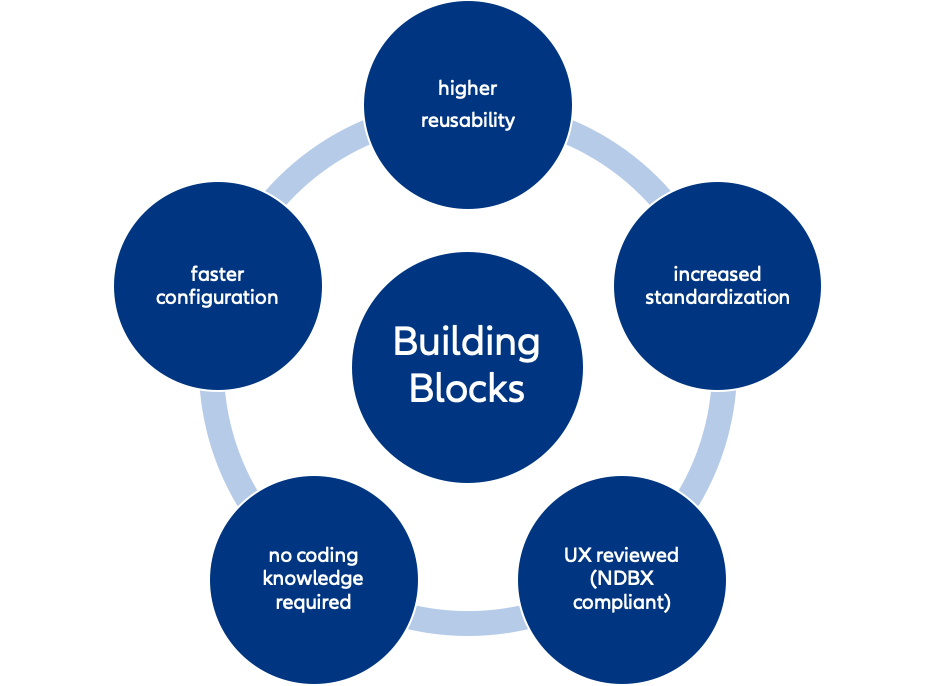Building Blocks - looks familiar to you, doesn’t it? A very simple and popular game from childhood times with tiny colorful blocks. Build anything with one kit, no matter if it is a family house, a farm or a castle. The standardized small blocks allowed countless variations. Why should we not use the simplicity of this popular building block system to master complex digital challenges?
Every day, Allianz faces the needs of 83 million customers in more than 70 different countries. By this diversity we are confronted with the challenge to adapt each digital experience to the specific needs of each target group. Defined UI components have to be changed and every single step has to be configured and adjusted separately from ABS to frontend. This often means not only a loss of consistency it also causes a lot of extra work.
To prevent this, our GDF experts, mainly around Jochen Supper as Head of Development and Anette Voigt as Head of Digital Asset Rollout, are working together with Jose Luís Guart Garrido from Allianz Technology Barcelona in a collaborative spirit on a modular building block approach. The approach is connecting our backend code and Allianz Business System (ABS) system with the frontend UX/UI Design of each standard component currently available to Allianz Operating Entities (OEs) within the UI library. Awesome, right? The approach gives us the chance to increase reusability by decreasing repetitive work. Finally, the need for changes in the code of an element will be eliminated and meanwhile many options for configurations will be left. You now might ask yourself, what a building block is. This question will be answered in the following sequence.

